Fruit Flip
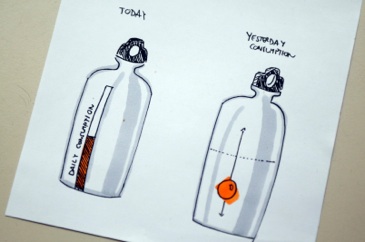
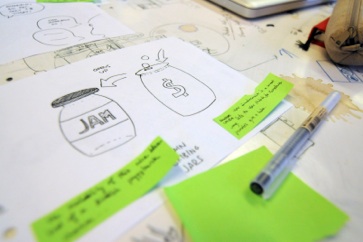
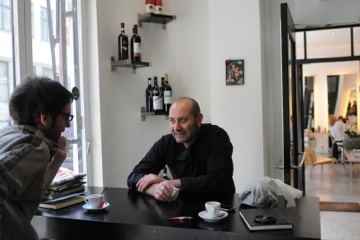


The Fruit Flip has been designed and built in three weeks by Marco Triverio, Harikrishnan Gopalakrishnan, and Marthinus Oosthuizen during the Tangible User Interface class held by Vinay Venkatraman and Richard Shed at the Copenhagen Institute of Interaction Design (CIID, www.ciid.dk).
Fruit Flip is a simple service product that inspires people to eat healthy fruit and vegetables in new ways by providing hints and tips through intuitive interaction. The Fruit Flip connects to a simple service that delivers fresh, organic fruit and vegetables to your home on a weekly basis and aims to foster knowledge in healthy, balanced diet.
The contents of the produce delivered by the service is registered with the Fruit Flip via RFID; communicating types of fruit or vegetables and their weight. When a piece of fruit or vegetable is removed, the Fruit Flip detects the change in weight and is able to understand which piece has been taken, based upon which the Fruit Flip delivers a recommendation from its ‘roll of recipes’. Simply rocking the Fruit Flip back and forth allows you to randomly present a new recipe using the object. Even when not actively using the Fruit Flip, it still provides random suggestions in an attempt to catch the attention of anyone in the vicinity.
Fruit Flip was developed as part of the Tangible User Interface module at CIID where the team used a process starting with user research into people’s eating habits and inspiring positive change in their diets. From understanding the context and extracting insights from the research the team developed ideas, video prototyped iterations of ideas, conducted user validation testing, and built a working prototype.


The sketching phase has been particularly dense. We have generated more than 100 ideas, which have been the foundation for the exploration and evaluation of different approaches.
The first working prototype has required an incredible range of skills: mechanical engineering, industrial design, hardware engineering, and software engineering.
The hardware has required a number of challenges -from the miniaturization of Fruit Flip’s custom board to the reverse-engineering of a cheap kitchen scale.
Ladies and gentleman: the Fruit Flip.

At different times during the project we have looked at existing industrial design solutions for inspiration.

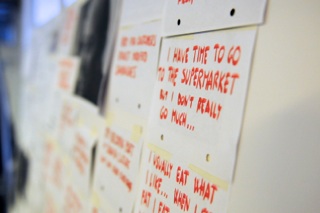
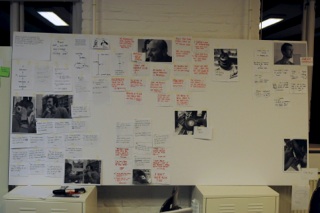
At the beginning of the process we have formally interviewed a chef, a dietitian, an anthropologist, a student, and a young worker regarding their food habits and their cooking tips. Moreover we have done some “guerilla interviews” at supermarkets and on the streets.
Back to the studio we have put on the wall all the quotes of our interviewees.

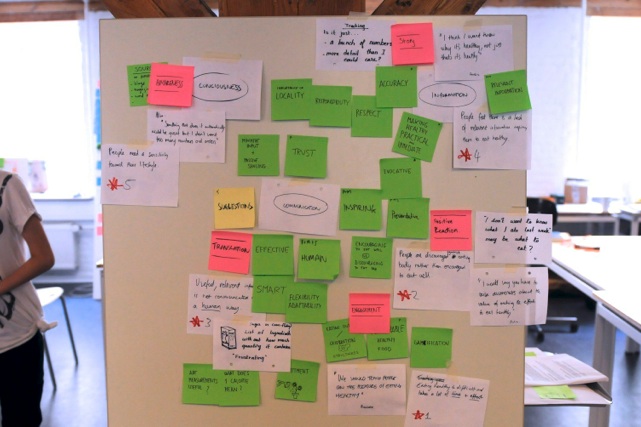
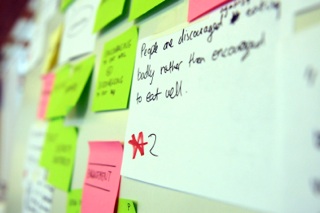
From the quotes we have extracted five design opportunities and we have started the ideation phase.
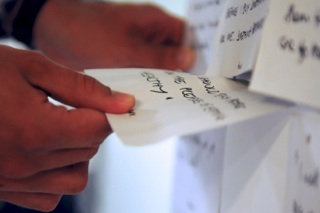
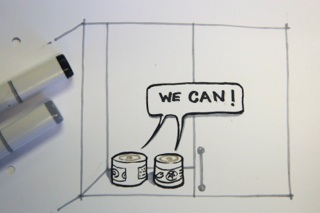
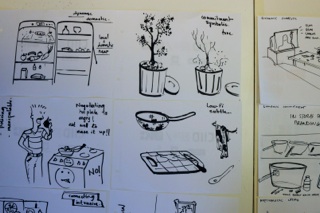
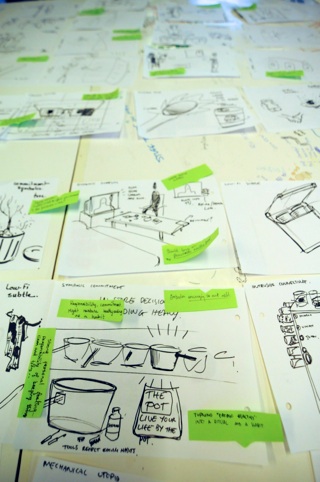
We have also developed two video prototypes.
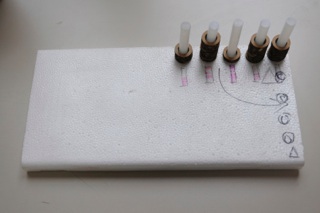
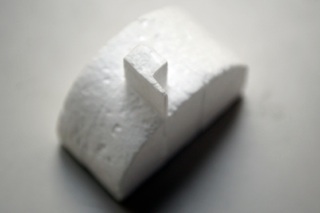
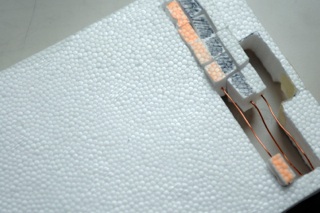
One of the topics of discussion has been the tracking of portions and ingredients. We have built several “just enough” prototypes that we have discussed and subsequently tested on potential users.
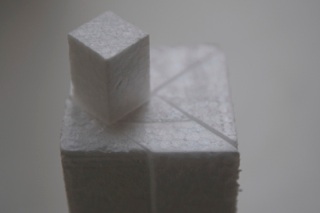
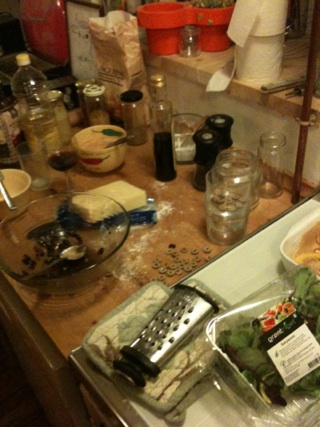
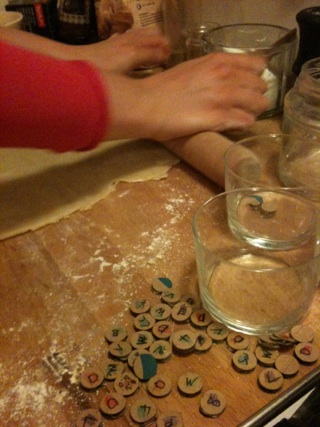
We tested “in the field” some of the prototypes that allowed users to track ingredients and portions. The user testing session shown in the pictures above has been carried out with the young worker interviewed at the beginning of the process.
After this sessions we were inspired to explore interactions that reach to the user instead of requiring him or her to make the first step.
After user testing we have sketched and prototyped (in three cases also through videos) new solutions with quirky, subtle, and engaging interactions. We have finally settled on the “Fruit Flip”, a Rolodex-inspired object capable of suggesting recipes.
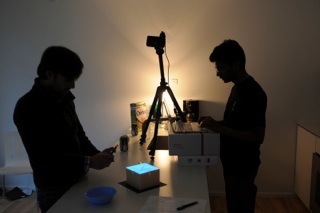
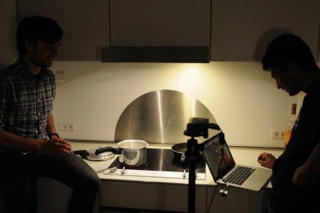

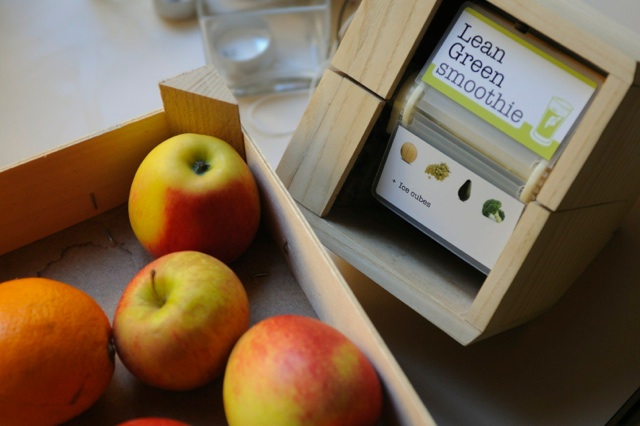
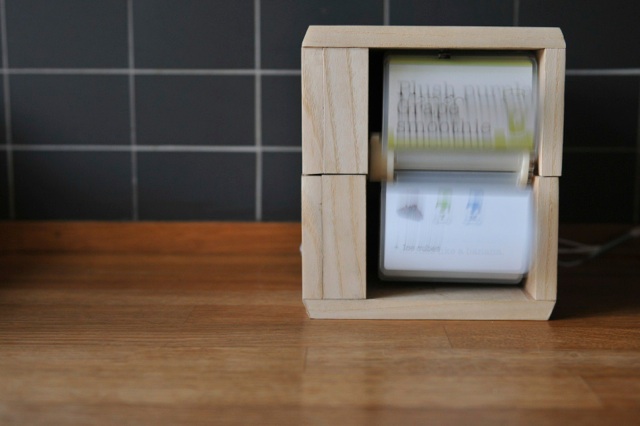




The initial prototypes of the Fruit Flip have helped us define the exact shape and size.


